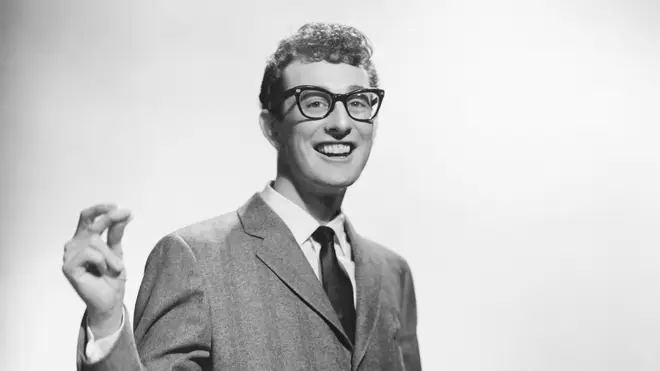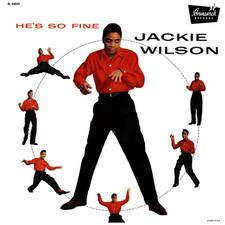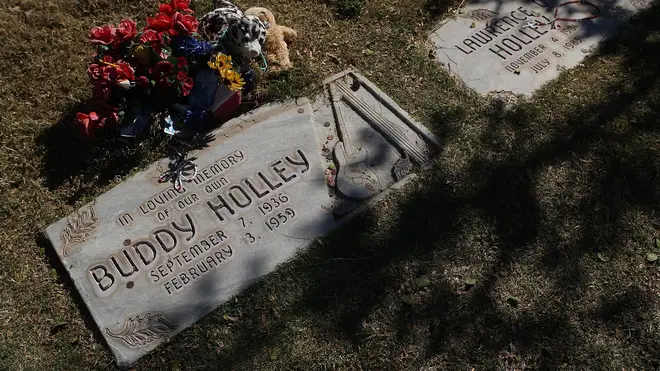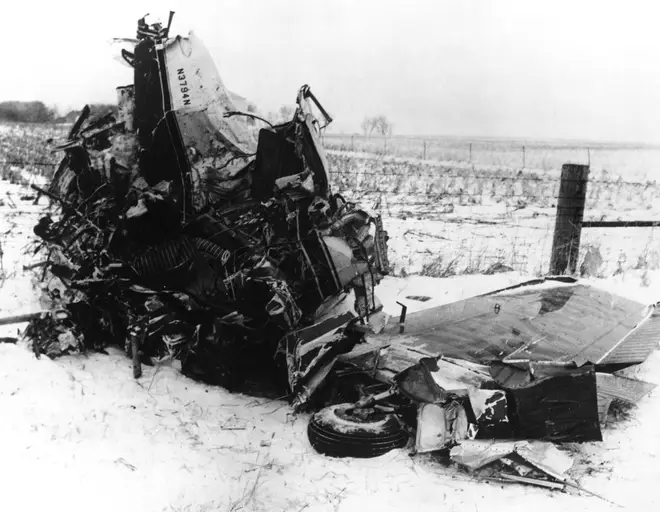The Day the Music Died: Looking back at the rock and roll tragedy
1 February 2022, 00:02 | Updated: 10 October 2023, 13:57

On February 3, 1959, the music world was shocked when American rock and roll stars Buddy Holly, Ritchie Valens, and JP 'The Big Bopper' Richardson were killed in a plane crash near Clear Lake, Iowa, along with pilot Roger Peterson.
The event eventually became known as 'The Day the Music Died', after Don McLean's classic 1971 song 'American Pie'.
Today (February 3) marks 63 years since the disaster. Here, we look back at who the tragic stars were and the legacy they left behind:
-
The Day the Music Died plane crash: What happened?
Buddy Holly and his band, consisting of Waylon Jennings, Tommy Allsup, and Carl Bunch, were playing their Winter Dance Party tour across the States.
Artists Ritchie Valens, The Big Bopper and Dion and the Belmonts had also joined the tour.
Long journeys between venues on the cold and uncomfortable tour buses badly affected the artists, who had flu and even frostbite.
After stopping at Clear Lake, and growing tired by the conditions, Holly chose to travel on a plane to reach their next venue in Moorhead, Minnesota.
Richardson, who had the flu at the time, swapped places with Jennings, while Allsup lost his seat to Valens on a coin toss.
Soon after takeoff, in poor and wintry weather conditions, the pilot lost control of the light aircraft, which crashed into a cornfield. Everyone on board was killed.
-
Buddy Holly, The Big Bopper and Ritchie Valens: Who were they?

Buddy Holly - Peggy Sue Live
Buddy Holly was an American singer who was a main pioneer of rock and roll in the 1950s.
Along with his band The Crickets, he had many hits including 'Peggy Sue', 'That'll Be the Day' and 'Everyday'.
He was a big influence on many big artists, particularly The Beatles and Bob Dylan. He was just 22 when he died.

Big Bopper: Chantilly Lace
The Big Bopper was an American singer known for his rockabilly style and his 1958 song 'Chantilly Lace'. He was 28 at the time of the crash.
Ritchie Valens was a Mexican American singer and guitarist. Aged just 17 at the time of the crash, his career lasted just eight months.
In that small time, he had several big hits, most notably 'La Bamba' and 'Donna'.

The Real Ritchie Valens - La Bamba
-
What happened after the crash?
Picture: Getty Buddy Holly's pregnant wife, María Elena, found out about his death from TV reports. A widow after just six months of marriage, she suffered a miscarriage soon after, apparently due to "psychological trauma".
Elena did not attend his funeral and has never visited the gravesite. She later said: "In a way, I blame myself. I was not feeling well when he left. I was two weeks pregnant, and I wanted Buddy to stay with me, but he had scheduled that tour. It was the only time I wasn't with him. And I blame myself because I know that, if only I had gone along, Buddy never would have gotten into that airplane."
The Winter Dance Party tour carried on, and Jennings and Allsup continued performing for two more weeks, with Jennings taking Holly's place as lead singer.
The funerals of the victims were held individually. Holly and Richardson were buried in Texas, Valens in California, and Peterson in Iowa.
-
Were there any investigations into the crash?
The Day The Music Died. Picture: Getty The official investigation was completed by the Civil Aeronautics Board (CAB), revealing that Peterson had over four years of flying experience. However, he had passed only his written exam, and was not yet qualified to operate in weather that required flying solely by reference to instruments.
He and Dwyer Flying Service were certified to operate only under visual flight rules, which required the pilot to be able to see where he is going. However, on the night of the accident, visibility would have been impossible due to the low clouds and zero ground lights.
The CAB concluded that the accident was due to "the pilot's unwise decision to embark on a flight" that required instrument flying skills he did not have.
Another contributing factor was the "seriously inadequate" weather briefing provided to Peterson, which "failed to even mention adverse flying condition which should have been highlighted".
In 2007, Richardson's body was exhumed for reburial in a better part of the local Forest Lawn cemetery. His son took the chance to have his father's body re-examined.
Rumours surrounding the accident claimed that there had been an accidental gunshot on board the aircraft, causing the crash, after a farmer discovered at the crash site a pistol known to have belonged to Holly.
Another rumour claimed Richardson survived the initial impact of the crash, and crawled out in search for help, as his body was found a greater distance from the wreckage.
Several X-rays of Richardson's body concluded that the musician died instantly, and no traces of lead were found from any bullet.
-
What legacy did the crash have?

Don McLean - American Pie (Good quality)
The crash was referenced in the biographical film The Buddy Holly Story and the Ritchie Valens biopic La Bamba.
Fans of Holly, Valens, and Richardson have gathered for annual memorial concerts at the Surf Ballroom in Clear Lake ever since 1979. The 50th-anniversary concert took place in 2009, with performances from Chris Montez, Bobby Vee, Graham Nash, Peter and Gordon, Tommy Allsup and Richardson's son Jay.

Don McLean explains the making of 'American Pie'
In 1988, a four-foot-tall granite memorial showing the names of Peterson and the three singers was installed outside the Surf Ballroom, with Peterson's widow, parents, and sister in attendance. This was the first time the families of Holly, Richardson, Valens, and Peterson had met up.
A large steel structure of Wayfarer-style glasses similar to those worn by Holly can be seen at the access point to the crash site.
Don McLean addressed the accident in his song 'American Pie', naming it 'the Day the Music Died'. McLean described the incident as the "loss of innocence" of the early rock-and-roll generation.















